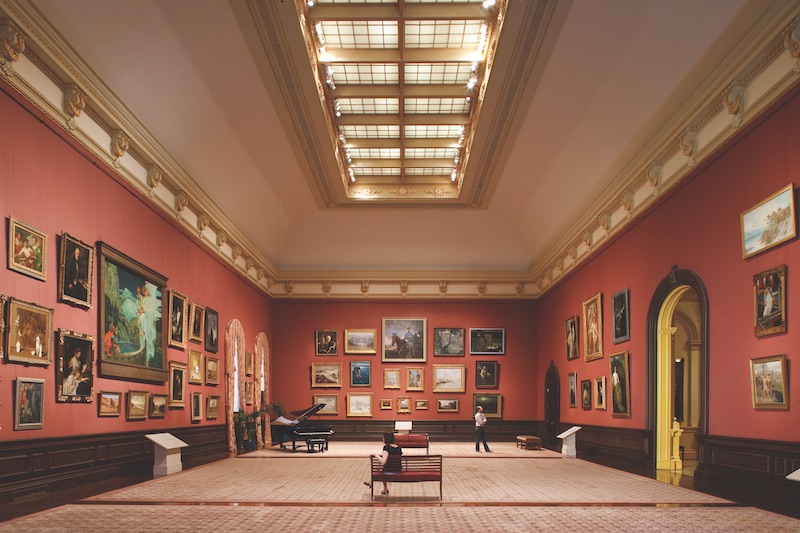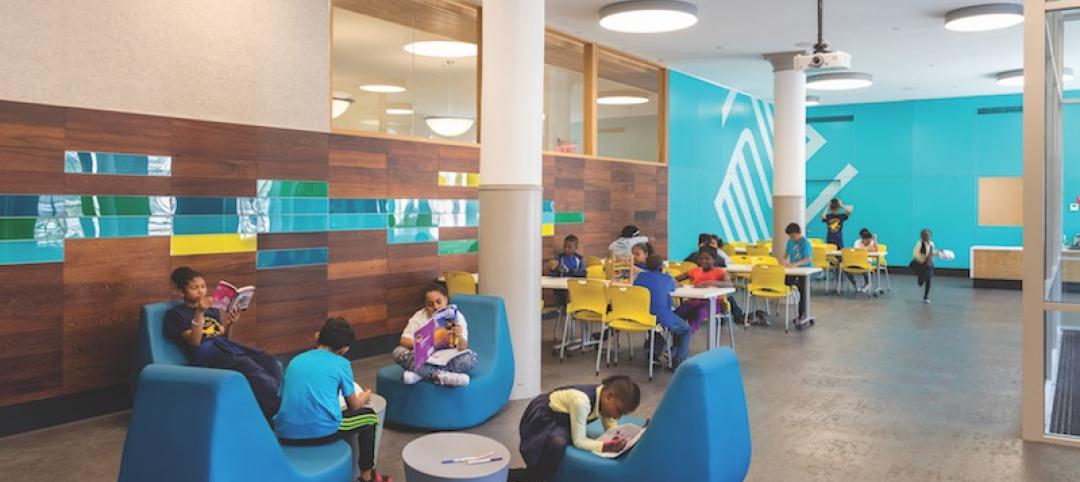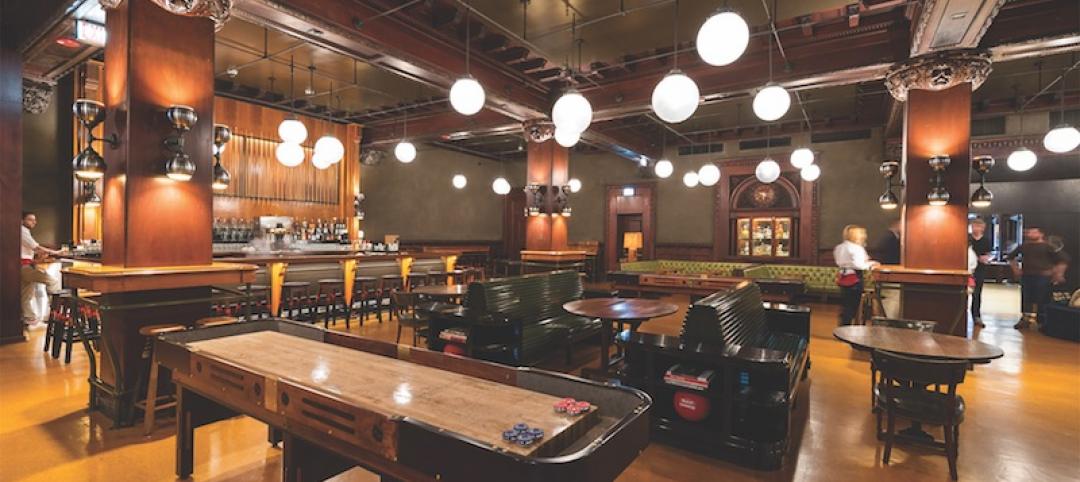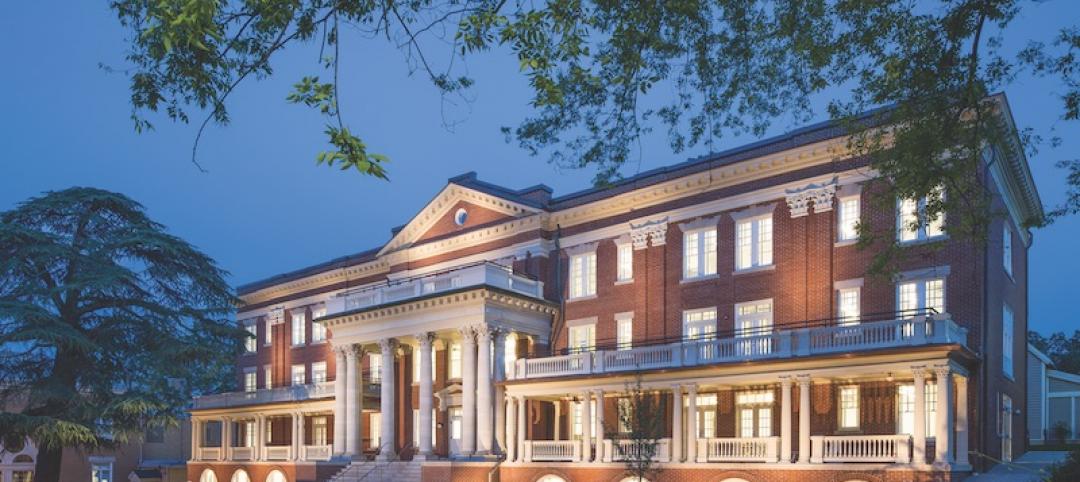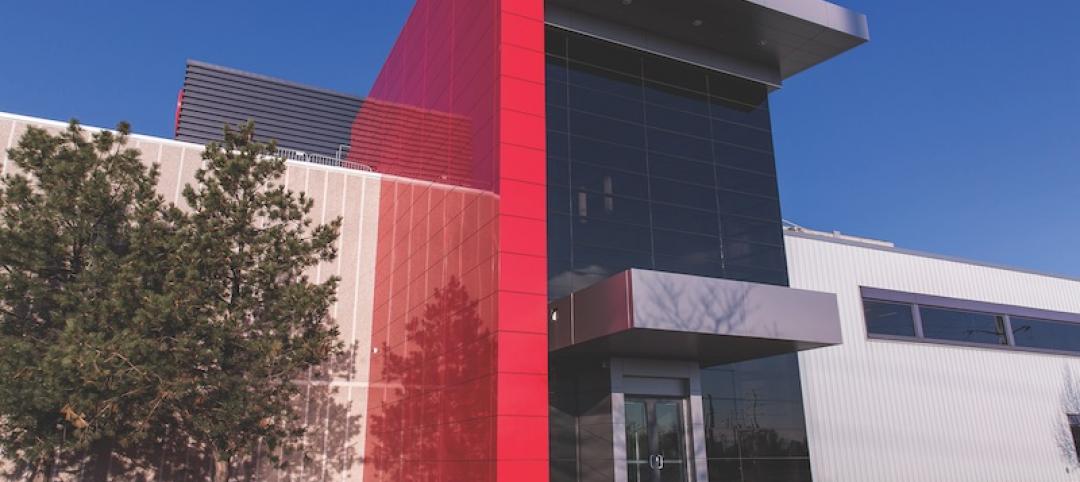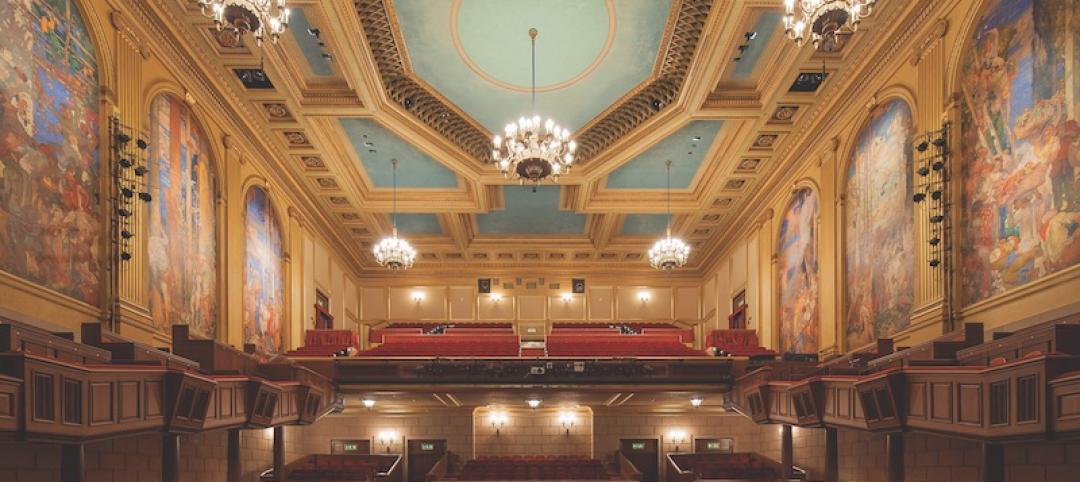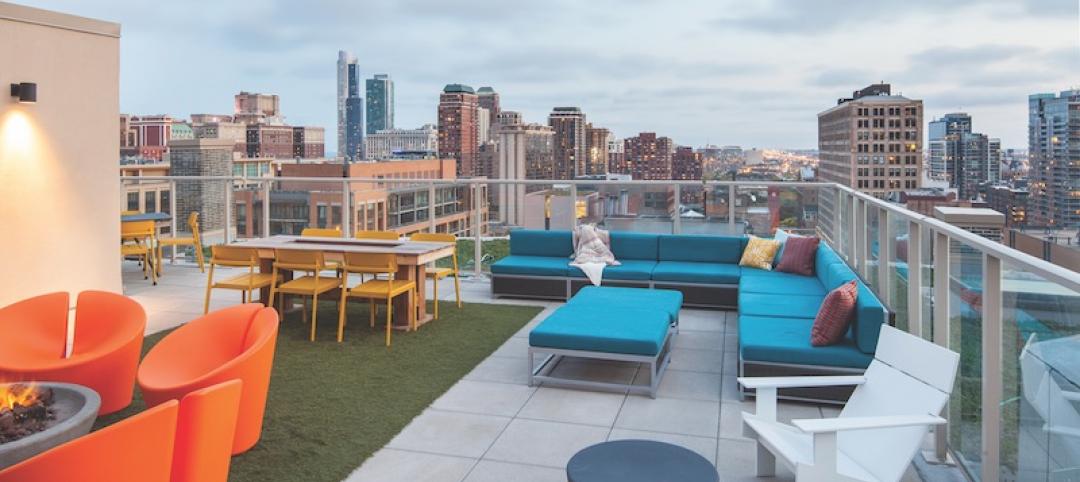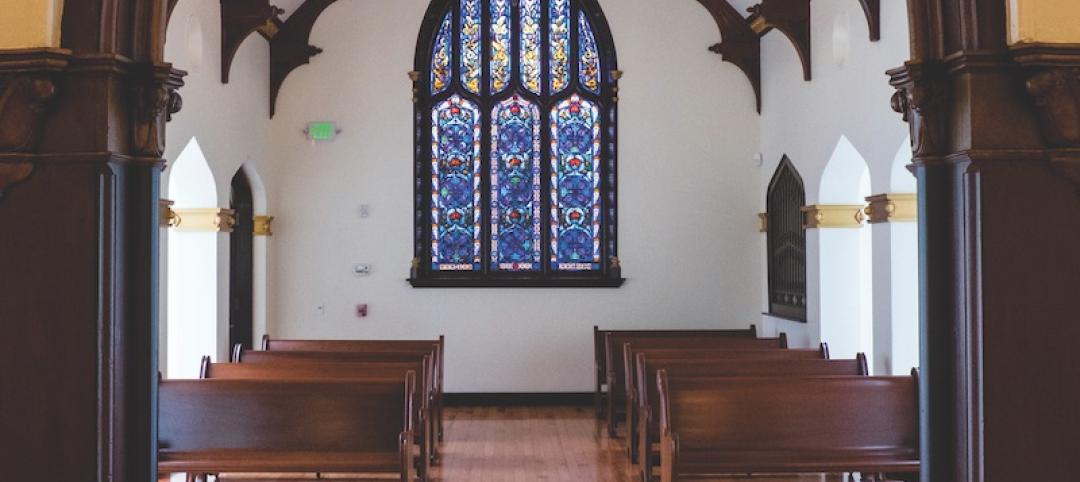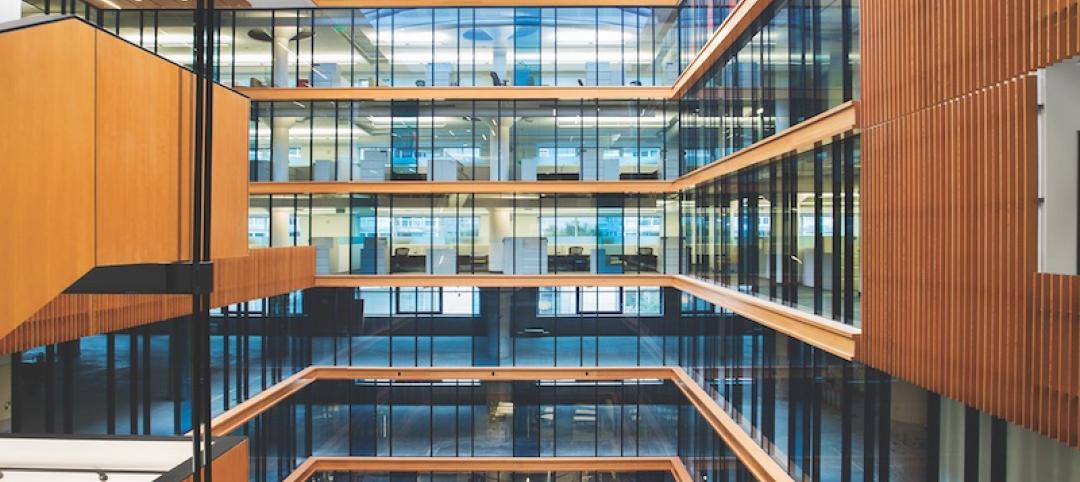The Renwick Gallery (1859) was designed by architect James Renwick, Jr., as the original Corcoran Gallery of Art. The National Historic Landmark is on the National Register of Historic Places and sits in the Lafayette Square Historic District. The Building Team, led by Westlake Reed Leskosky (lead architect) and Consigli Construction Co. (GC/CM), had to surmount numerous hurdles to gain approvals from the National Capital Planning Commission, the U.S. Commission of Fine Arts, the District of Columbia Historic Preservation Office, and even the Secret Service.
The renovation restored two long-concealed vaulted ceilings in the second-floor galleries and recreated the original 19th-century window configuration.
The most difficult task involved the installation of an innovative rolling aluminum frame roof system. The retractable roof (from manufacturer HAKI) gave the team relatively efficient access to the cramped attic so that a new mechanical level could be constructed in that space. The new roof further protected the irreplaceable historic ceilings from the weather. The new mechanical system will keep the Renwick at the prescribed temperature and relative humidity to preserve the gallery’s artwork.
Consigli Construction laser scanned the structure to create a 3D BIM model that informed the rebuild of the attic and structural upgrades in the confined roof structure. The highly detailed model enabled the team to work within the building’s own structural system to add structural steel in the attic above the second-floor galleries, thus allowing for the installation of a robust art environment.
PROJECT SUMMARY
Bronze Award Winner | Washington, D.C.
Building Team: Westlake Reed Leskosky (submitting firm, lead architect, MEP, sustainable design, lighting/technology, historic preservation); Consigli Construction Co. (submitting firm, GC/CM); The Smithsonian Institution (owner); Woods Peacock Engineering Consultants (SE); Wiles Mensch Corp. (CE); ATS Studios (historic restoration); Applied Environmental (hazmat); GHD/Protection Engineering Group (FP); MAS Building and Bridge (structural steel erector); Welsh and Rushe (mechanical contractor).
Details: 46,598 gsf, 34,000 nsf. Construction cost: $30 million. Construction time: January 2014 to November 2015. Delivery method: Design-bid-build.
Related Stories
Reconstruction Awards | Nov 13, 2017
Harlem Renaissance: A vacant school provides much-needed housing and a clubhouse for children
Word that PS 186 might be demolished brought out the preservationists, whose letter-writing campaign gained the support of the New York Landmarks Conservancy.
Reconstruction Awards | Nov 16, 2016
BD+C's 2016 Reconstruction Award Winners
St. Patrick’s Cathedral, Lovejoy Wharf, and the Bay Area Metro Center are just a few of the projects recognized as 2016 Reconstruction Award winners.
Reconstruction Awards | Nov 16, 2016
Reconstruction Awards: Massachusetts Maritime Academy
The two-story “overbuild” employed block and plank construction with drag strut detailing to connect it to the existing building.
Reconstruction Awards | Nov 16, 2016
Reconstruction Awards: The Masonic Temple
The building team suspended a new eighth-floor mezzanine and added 18 9x15-foot windows to the north, south, and west façades.
Reconstruction Awards | Nov 16, 2016
Reconstruction Awards: San Francisco War Memorial Veterans Building
The building team used a system of rocking concrete shear walls, which eliminated the need for deep foundations and reduced the shear force on each wall.
Reconstruction Awards | Nov 16, 2016
Reconstruction Awards: Arc at Old Colony
The Arc at Old Colony's vintage floor plans, voluminous lobby, and myriad elevators were perfect for redevelopment as a historically charming residential building.
Reconstruction Awards | Nov 16, 2016
Reconstruction Awards: Noble Chapel
In May 2013 the 124-year-old Noble Chapel, suffered a three-alarm fire that almost completely destroyed its 1937 crematorium.
Reconstruction Awards | Nov 16, 2016
Reconstruction Awards: Bay Area Metro Center
The structure’s 60,000-sf floor plates made the interior dark and foreboding, and BAHA wanted to improve working conditions for its employees and tenants.


